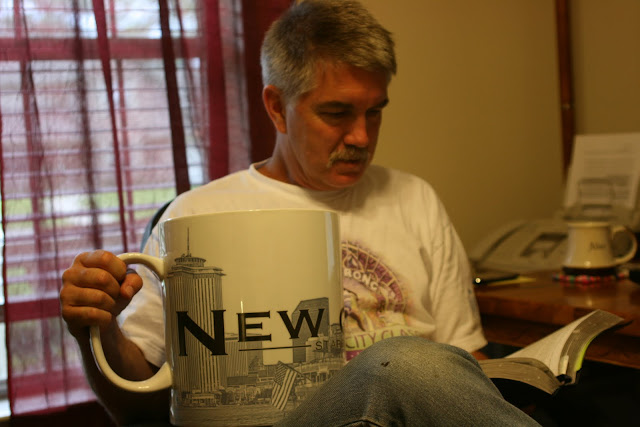I am preaching a sermon series for advent called, "A Stained Glass Christmas" -- this is the idea behind it. Thanks to Dunwoody Baptist Church and FBC Winnfield families for encouragement and much love.
Before I came to Dunwoody in the 80s as youth pastor, I served a church in Louisiana. During my time there, we did a building project (anyone surprised?). We renovated a sanctuary building that was built in the 1920s. We decided to restore and repurpose the old building to preserve the stories of the wonderful history of the church (home of Huey and Earl Long) rather than to tear down the historic building and start over.
We discovered many things about renovating an old building. The columns were full of bees. The foundation was leveled by pouring more concrete. The roof trusses were so full of termites that the inspector said “the only thing holding this building up is that the termites must be holding hands. And the stained glass windows needed to be completely restored.
I learned more about stained glass than I ever thought I would know as I watched the tradesmen remove each window and transport it to a rented storefront nearby that had been transformed into a stained glass studio. Each window was disassembled, cleaned, and reassembled using the original lead process. Then each window was replaced in its original location and sealed with a storm glass to preserve it.
Seems like a lot of work and expense for windows. But stay with me.
At its most basic level, a stained glass project consists of pieces of glass whose edges are joined together in some manner. There are two common materials used to join glass –copper foil and lead. With each, the glass edges are held in a channel that conforms to the shape of the piece. Stained glass is colored glass and it has been used for a thousand years to create art in windows, using the color of the glass and the sun that God provides to illuminate the story in the window. Stained glass has been used historically in churches, but has expanded to other applications by modern artists like Frank Lloyd Wright and even the famous lamps of Louis Comfort Tiffany.
The craftsman takes small pieces of colored glass and creates a story, an image, a work of art by arranging the glass into designs or pictures, bordered and secured by strips of lead or copper. Sometimes additional details are painted. The artist doesn't just start putting glass into random places. He or she has an idea in mind, a story that the window must tell. In addition to artistic skills, the artist must design it in such a way that it can be a chapter in a story with other windows in the same room and also hold up to wind and rain and cold--as functional as it is beautiful as a window.
I have seen incredible stained glass from the Notre Dame in Paris to the stunning contemporary design at FBC Huntsville, Alabama. In Europe, many stained glass windows remain and it is fair to say that they are examples of a major art form from the medieval period. Interestingly, they do not serve very well as windows as it is difficult to see out. However, they manipulate light in such a way as to create beauty regardless of which side of the window one is standing.
So what? It occurred to me that the various parts of the Christmas story are independent in a way, yet the pieces need to come together in just the right way to tell the story of Jesus’ birth and why it is significant to us. Three of the gospel writers viewed the nativity through their own lens. The Gospel According to Mark has no story of Jesus's birth. Instead, Mark's story begins by describing Jesus's adult life, introducing it with the words, “The beginning of the good news of Jesus Christ, the Son of God” (1:1).
Mark does tell of John the Baptist, who predicts the coming of a man more powerful than himself. And each adds details that the others leave out. We need all of the writers, all of the stories to bring together the intent of God the Father in sending His son to us as a baby, to grow into a man and to be the sacrifice for our sin and brokenness.
Only two of the four canonical gospels, Matthew (Matthew 1:18-25) and Luke (Luke 2:1-7), offer narratives regarding the birth of Jesus. Of these two, only Luke offers the details of Jesus' birth in Bethlehem. John’s gospel starts at the beginning of the universe, telling us that the birth of Jesus was part of God’s design for mankind from the start.
From the original idea for the Christmas series: The music of Christmas is always memorable in church. At DBC, this year, the combined choirs and orchestra will present “The Symphony of Christmas” on Christmas Eve. The five songs in the piece provide the background and the storyline for the series. The titles come from the movements in the music. Each of the messages is a component of the story–an individual piece of stained glass to go into the window that allows us to see the whole story.
Oh and by the way, I love a saying about perspective: “When you look at a window, you see fly specks, tiny cracks, and the accumulated dust and dirt. When you look through a window, you see the world that God made and challenged us to love.”
The point of the series is to look at the beautiful window that God has given us in the story of Jesus coming to earth to live and die so that people can be forgiven from sin. Then we look through the window at a world desperately in need of that message.

